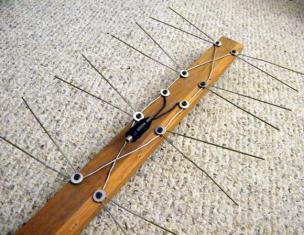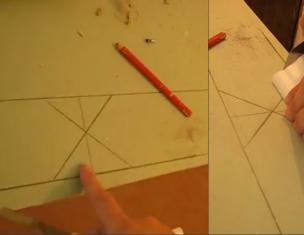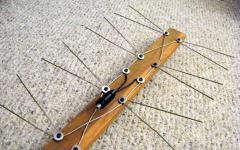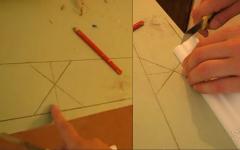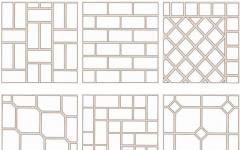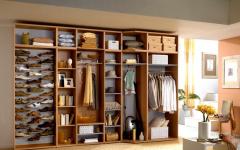Plaster, as a way to finish the walls, is applied from a long time since the Renaissance era. In those days, the style of their decoration, called frescoes originated.
This wall painting, which has come down to this time, cannot leave anyone indifferent. Modern decorative plaster for interior decoration, in the hands of a good master, is able to create masterpieces that are not inferior to frescoes.
Our article will talk about what kinds of decorative plasters today exist, and what aesthetic effects can be obtained from their use.
According to the binder element, decorative plasters are divided into water and polymer. What is water - everyone and so understandable.
So:
- Polymer plaster can be on a polyurethane basis. They can be used both for outdoor and interior decoration.
Another type of polymer compositions, epoxy, is used only indoors. - Plaster formulations are classified and according to other criteria: according to the material used as a filler, as well as a method for applying and forming a picture.
- Due to the fact that polymer mixtures can be released toxic substances, decoration of apartments with decorative plaster based on polyurethane and epoxy resins, undesirable. To do this, it is better to use water based options.
Water plaster can be acrylic, butadiene styrene, based on PVA. - According to the resulting surface of the plaster, too vary. The most popular are chamethro.
The granite, marble or quartz crumb is used as a filler.

- As a binding foundation, cement is used here more often, because they use pebble plaster, mainly for. The filler is usually sold separately from the mixture itself, and is added to only the last simony of the solution for applying the finish layer.
But there are on sale and ready-made options on a plaster basis. - The most environmentally friendly can be considered mineral plaster, which includes: white cement, lime, granulated marble and various minerals. Such material has good thermal insulation properties.
- It is used more often for the outer finish, but sometimes fit well in the interior of the premises. Mineral species of decorative plaster include all the famous "Coroed".

- Spectacular patterns and amazingly beautiful drawings on the wall are created using the so-called structural plasters. Their solutions are incredibly plastic, so it's a pleasure with them.
The image can be sculpting from plasticine. - Structural plasters are available only white - pigments are sold separately, so that the solution can be sprayed at its discretion. The finished coating can be washed using detergents, it will retain your color and drawing for a long time.

- Venetian plaster decorative for interior decoration, the most difficult performed. Accordingly, the price is the highest.
In the spacious, it is called liquid marble. And it corresponds to the truth. Since the filler for such plaster is marble flour and gypsum of the finest grinding. - The surface of the Venetian plaster recreates the natural beauty and rich palette of marble shades, which is why any room acquires a rich interior, similar to the Antique Palace. It is almost impossible to fulfill such work.

- You need to know the technology of applying plaster, and it is very complicated, not less than six-seed layers. You still need to have professional skills and creative fantasy, allowing you to create unique pictures.
These are masterpieces, in the literal sense of the word, as you can repeat the same pattern twice and the master itself will not be able to repeat. Such is the Venetian plaster. - There are still some types of modern plastering mixtures that are not suitable for any of these categories. For example: Mic cement plaster. By and large, it is an analogue of Venetian plaster, but cheaper.
- The drawing created using micro-cement plaster looks like a venetian version, but the composition of this mixture is not plaster and marble, but cement and polymers. Due to this, mic cement plaster can be used for, as well as in rooms with high humidity.

The most affordable for self-decoration is a soft decorative plaster, called the people of Liquid Wallpaper. At their basis, flushed cellulose, or silk threads, glue CMC and pigment.
With a good imagination and compliance with certain technology, on the walls and with the help of liquid wallpapers, you can create excellent compositions, as in the photo from above.
Establishment of relief
Technology finishing with decorative plaster, like any other, begins with surface preparation. An old coating is removed, and the walls are cleaned to brick or concrete - depending on which house.
A wet cleaning is made in the room, dust from the walls is removed by a vacuum cleaner.
Further:
- A painting scotch, you need to take all the places where the plaster should not get. The surface of the floor is covered with dense paper, or cellophane film.
The wall is processed by the ground. This is a prerequisite required to ensure a good clutch of the wall with the wall. - Then you need to think over and pick up the color you need to create your interior. Plastering mixes are sold both in finished form and in dry.
If required, for example, to separate only a niche, of course, it is more convenient to take a solution ready for use.

- And when finishing large areas, it will be much cheaper to work with dry mixtures. They are bred by water, in the required instruction ratio, and are carefully shot down by a building mixer, to the consistency of thick sour cream.
- In working with decorative plaster it should be remembered that the light shade is the basis for a more dark color. Therefore, the first layer should be light.
The solution is superimposed on the wall as soon as possible, with the help of a rubber spatula. Although, careful smoothing, in this case, is not required.

- To create a relief, masters use a variety of tools: rubber and rag rollers, curly spatulas. Any healthy means help: rags, sponges, cellophan.
- You can even take a Christmas tree or children's mask, and make a trial relief. If you don't like something, you can always block the drawing and make a new one.
Rubber stamps specifically designed to create relief on the plaster can give it a kind of walls that are wound with textured wallpaper.

- If you want to get a clear pattern, after applying the relief, the wall must completely dry. Then the second, a darker layer of plaster is applied.
It is superimposed by small portions and thoroughly smeared. - The more subtle layer, the more transparent, and the better the relief will be visible. And due to the fact that the second layer of plaster is darker of the first, the relief looks also volumetric.
- It is worth noting that to achieve the original, the wizard often do not perform one relief, but several. At the same time, various shades of plaster can be combined, as in the bottom of the bottom.

- Depending on the nature of the drawing, you can apply the second layer without waiting for the drying of the first layer. Who seriously thought about how to independently fulfill such work, look at the video, as experts do.
- Unwanted influx or resulting angles, they are cut by a knife, grind the sandpaper. In this work, many nuances, and each master has their own professional secrets.

- There are a lot of varieties of structural plasters offered by manufacturers to create a specific relief, for example: cracked old plaster, tree bark or, as on our example, crocodile leather.
In order for the finished relief to acquire persistence, and not contaminated during operation, the wall should be covered with polyurethane sealant. It is done after half an hour after applying the picture.
Pictures and panels on the plaster
The original panel on the wall can decorate any, even the most modest interior. That is why many are wondering: "How to perform a panel and where it is better to place it?".

So:
- It is best if the panel will be on the protruding part of the wall or in niche (see). Especially if good illumination is used.
An excellent choice will be a free wall framed by a decorative stone or polyurethane molding. - The picture on the wall will look great and in common: next to the window, interior door or arch. Watching the pattern all the walls of the room is allowed only in one case - if it is a children's room.
Naturally, the theme of landscapes and drawings, in this case, is more often associated with the heroes of cartoons and fabulous characters.

- Decorative panels, like no other finishing material, causing a look, causes delight, desire to touch and make sure that this is the usual wall. The choice of drawing when creating a panel is not limited - only a good taste is needed.
And, of course, the drawing should not cause a disharmony in the overall interior concept. - In order to understand how the wall panel is performed, and the interior decoration with decorative plaster - video and photos found on the Internet will be indispensable assistants. And we, for our part, will also try to help you understand this issue.
- There are three types of techniques for creating a visual effect on plaster. The simplest, and accessible to self-create, is the volumetric panel.
As a stencil, a piece of plasterboard, organic, or plywood, with a pattern cut on it, or a pattern, can be used. - On the aligned and dry surface of the wall, painting scotch, on the perimeter, fasten stencil. On vertical surfaces, there is a possibility of a stencil displacement.
It can spoil the nuances and the fineness of the drawing. Therefore, instead of painting tape can be used to fix the stencil aerosol glue. - A plaster solution is applied to the carved elements of the stencil. The more his layer, the more the greater the drawing. After that, the stencil is gently removed.
Now your creation will have to dry completely. The time required for this depends on the thickness of the stacked layer of plaster, but no more than a day.

- After drying, the convex parts of the panel are applied with tinting paint, rolling on them with roller. Then, when the paint dries, they can be given a more dark shade, make it metal or pearl.
Such panels are often performed on the ceiling, in combination with plaster stucco. - Another, very popular type of decorative wall decoration is the painting on structural plaster and relief graphics. For this, plastic fine-grained plaster, acrylic paints and colorless varnish are used.
As tools use pointed wooden sticks, solid-caliber brushes, sponges, cardboard patterns and narrow spatulas.
![]()
- Many people are able to draw well on paper, they should be performed by the same drawing on raw plaster with a sharp object. For those who do not know how to draw, and there are paper templates.
Special rollers are used to create texture on panels. Place panel after its complete drying. - The third type of decorative decorative finishes are stucco panels, and various combined options. They are volumetric figures, or entire pictures made in the whole wall.
- Such panels can imitate brick or stone masonry, depict figures of people and animals, flowers and various items. This is the most difficult type of decoration, and without the participation of a specialist can hardly be performed.

Such work, especially fulfilled by the artist, does not work out, but the aesthetic impression that it produces is worth the funds spent, believe me. Decorative finish, made in this style, will delight for many years of all inhabitants of the house, and will never go unregistered guests who visited him.



